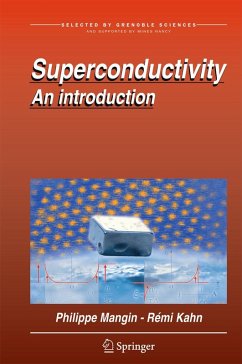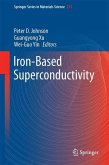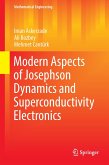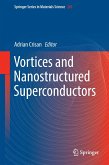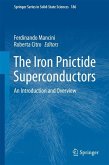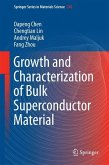This book proposes a thorough introduction for a varied audience. The reader will master London theory and the Pippard equations, and go on to understand type I and type II superconductors (their thermodynamics, magnetic properties, vortex dynamics, current transport...), Cooper pairs and the results of BCS theory. By studying coherence and flux quantization he or she will be lead to the Josephson effect which, with the SQUID, is a good example of the applications. The reader can make up for any gaps in his knowledge with the use of the appendices, follow the logic behind each model, and assimilate completely the underlying concepts. Approximately 250 illustrations help in developing a thorough understanding.
This volume is aimed towards masters and doctoral students, as well as advanced undergraduates, teachers and researchers at all levels coming from a broad range of subjects (chemistry, physics, mechanical and electrical engineering, materials science...). Engineers workingin industry will have a useful introduction to other more applied or specialized material.
Philippe Mangin is emeritus professor of physics at Mines Nancy Graduate School of Science, Engineering and Management of the University of Lorraine, and researcher at the Jean Lamour Institute in France. He is the former director of both the French neutron scattering facility, Léon Brillouin Laboratory in Orsay, and the Material Physics Laboratory in Nancy, and has taught superconductivity to a broad audience, in particular to engineering students.
Rémi Kahn is a retired senior research scientist of the French Alternative Energies and Atomic Energy Commission (CEA-Saclay). He worked at the Léon Brillouin Laboratory and was in charge of the experimental areas of INB 101 (the Orphée research reactor).
This work responded to the need to bring an accessible account suitable for a wide spectrum of scientists and engineers.
This volume is aimed towards masters and doctoral students, as well as advanced undergraduates, teachers and researchers at all levels coming from a broad range of subjects (chemistry, physics, mechanical and electrical engineering, materials science...). Engineers workingin industry will have a useful introduction to other more applied or specialized material.
Philippe Mangin is emeritus professor of physics at Mines Nancy Graduate School of Science, Engineering and Management of the University of Lorraine, and researcher at the Jean Lamour Institute in France. He is the former director of both the French neutron scattering facility, Léon Brillouin Laboratory in Orsay, and the Material Physics Laboratory in Nancy, and has taught superconductivity to a broad audience, in particular to engineering students.
Rémi Kahn is a retired senior research scientist of the French Alternative Energies and Atomic Energy Commission (CEA-Saclay). He worked at the Léon Brillouin Laboratory and was in charge of the experimental areas of INB 101 (the Orphée research reactor).
This work responded to the need to bring an accessible account suitable for a wide spectrum of scientists and engineers.
"In Mangin and Kahn's 'Superconductivity' there is an overview of the scientist who are/were involved in the discoveries connected to superconductivity. ... In 'Superconductivity' you can also read about how SQUID magnetometers work, that enable scientists to measure very small magnetic fields. The book is a well-rounded, complete and student friendly guide to superconductivity. It assumes that the reader is well acquainted with at least undergraduate physics." (AstroMadness.com, December, 2017)
"The rich contents of the major topics of superconductors are very well organized into a small volume, and are presented nicely and concisely. The physical theories are clearly explained, with the mathematical details given as appendices of each chapter, so that the reader will not get lost in the technical details. ... this book is interesting both to students and researchers in physics and mathematics who wish to know the global picture and beauty of the theory of superconductivity." (Xingbin Pan, zbMATH 1372.82002, 2017)
"The rich contents of the major topics of superconductors are very well organized into a small volume, and are presented nicely and concisely. The physical theories are clearly explained, with the mathematical details given as appendices of each chapter, so that the reader will not get lost in the technical details. ... this book is interesting both to students and researchers in physics and mathematics who wish to know the global picture and beauty of the theory of superconductivity." (Xingbin Pan, zbMATH 1372.82002, 2017)

